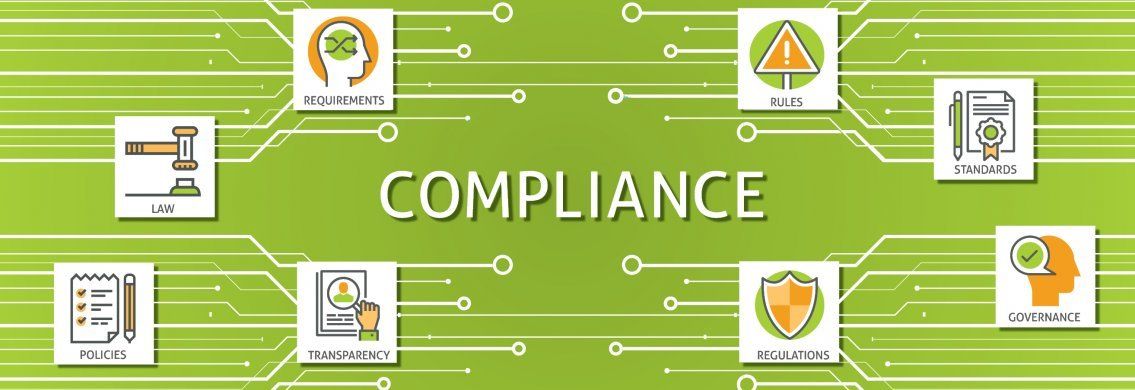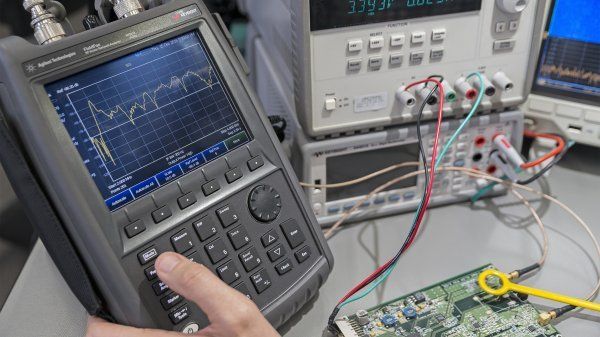Beta Solutions Blog
Electronic Product Compliance - Answers to Frequently Asked Questions
Date: Oct 04, 2017
What is compliance?
Inventing and developing the next big electronic product is a significant step but is not the last step before that product can go to market. New Zealand, and most overseas markets have laws and regulations which regulate what can be sold in that market. These regulations specify all the legal requirements for which a product must comply with.
Any given product can fall within the scope of multiple regulations which each govern its sale. The two most common regulations for electronic products in New Zealand are:
- Electricity (Safety) Regulations 2010
- Radiocommunications Regulations 2001
Compliance with regulations often means complying with relevant Standards. Standards are documents which set out the specifications, procedures and guidelines for products within their scope. Standards are used extensively during the design process. As examples, AS/NZS 3100 specifies the general requirements for electrical equipment and AS/NZS 60950 specifies the requirements for information technology equipment (E.g. laptops, and phones). Once the design is finished, the product is then tested to show compliance. Higher risk products require that they be tested by testing laboratories which are accreditted.
Products sold in overseas markets might have to comply with FCC, CE, UL, or other regulations and standards.
Who must comply?
Anyone who makes or supplies electrical, electronic, or radio products to the New Zealand market must ensure their products comply with the regulations.
New Zealand's Electrical Equipment Safety System (EESS) and the Radio Spectrum Management’s (RSM) product standard framework is based on the principle of supplier self-declaration. Suppliers must take responsibility for the products they place on the market, whether they are imported or domestically produced.
Why should you concern yourself with compliance?
Complying with the requirements set in these regulations can sometimes be a time-consuming and expensive process. Given that, it can be easy to think that we would be better off without them - as products could be put to market faster, which can be critical for a new product's success. However, it needs to be remembered that the purpose of these regulations is to protect the consumer.
Undertaking compliance goes a long way to ensuring that your product will not cause harm to other products, the environment, and most importantly to people. Hence, investing in compliance upfront minimises your risk and liability.
How can I know what I must do?
Compliance can be a tremendously complex area, often requiring one to be familiar with hundreds (or thousands) of pages of regulations. Therefore, it is often prudent to use the services of a professional electronics design consulting firm to take the burden off you.
To ensure our clients' products comply with regulations, we at Beta Solutions, work with the testing laboratories themselves to identify all the requirements at the start of the design cycle. This makes it possible for our engineers to consider the implications for compliance with every decision. We aim to design our clients' electronic products so that they pass the compliance process first time. Beta Solutions has years of experience with complying with standards which enables us to create products which are safe and do not cause interference.
What is the compliance process?
The process of conformity varies across different product categories and markets but generally follows the steps below:
- Identify the markets which the product will be sold in.
- Investigate the regulations for each market and identify all the requirements for your product.
- Assemble a compliance folder with evidence that shows that your product complies with all requirements (E.g. Technical test reports).
- If required, submit this evidence to an approved body who will review it and generate a compliance certificate.
- If required, register your product in the relevant database.
- Put the compliance mark(s) on your product.
- Your product is ready for sale.
How can compliance costs be minimised?
Compliance costs have a roughly proportional relationship with the level of risk inherent to the product. For example, products which have voltages or energies which have the potential to harm a user need to be designed and tested to a higher standard. Likewise, products which have features which could radiate (intentionally or unintentionally) harmful radio energy also need to be tested to an agreed standard so as not to adversely affect other devices.
Here are three ways to reduce compliance costs by reducing risk:
Think Simple.
System complexity is also roughly proportional to compliance costs. Products which incorporate more features commonly require more testing. For instance, a product which has a wireless radio, is powered by mains, has live parts which the user can touch, and operates in an explosive environment must be compliant with IECEx, EMC, Radio, and Electricity Safety schemes and will require extensive compliance testing.
Implementing a “minimal viable approach” can reduce complexity/risk and therefore compliance costs. For example, if it is not absolutely necessary for a product to have a wireless radio then it might be decided to omit this feature – at least for the initial product release. Additional features can very likely be added at a later date for future product versions.
Design Modular.
One method to reduce compliance costs in electronic product design is to use “commercial off the shelf” (COTS) pre-compliant modules.
For example, it is common practice for manufacturers to supply their products with an external mains power brick. This power supply, which can be reused across their product line, only needs to be tested once. Often already compliant power supplies are sourced from another manufacturer so that only the product needs to be tested. The device itself then contains no dangerous voltages and design time, and testing can be significantly reduced. Implementing COTS radio modules are often another way to reduce, or completely negate, the need for radio compliance testing.
Think Compliant.
The best time to start considering compliance is right at the very early stages of development. The implications of compliance issues arising in the later stages of a project could result in (i) costly redesigns (ii) delays (iii) a less than successful project. Hence, it is critical to consider the compliance requirements early on during the design process to reduce potential costs.
Conclusions
The laws in New Zealand, and many other countries, call for electronic products to comply with the requirements set out in strict safety, EMC, and radio standards. These requirements need to be considered at every stage during the development process.
The legal requirement for compliance is here to stay. Every electronic product sold in New Zealand must comply. Embrace it now to minimise liability and ensure that your new product is a success.
Compliance is a complex area, prehaps the best thing you can do is to use the services of a professional electronics design consulting firm to take the burden off you. At Beta Solutions, we have considerable experience in designing compliant products for our clients.
If you would like to know more about compliance in electronics product development, feel free to get in touch via our contact page or give us a call.
References
- Electricity (Safety) Regulations 2010 - http://www.legislation.govt.nz/regulation/public/2010/0036/latest/DLM2763501.html
- Radiocommunications Regulations 2001 - http://www.legislation.govt.nz/regulation/public/2001/0240/latest/DLM71513.html
- Compliance Engineering. "Regulatory Compliance Mark (RCM)." Retrieved from http://www.compeng.com.au/wp-content/uploads/2014/10/Regulatory-Compliance-Mark2.pdf
- Electrical Regulatory Authorities Council. "Australian/New Zealand Electrical Equipment Safety System . Equipment Safety Rules". (Version 1.1). Retrieved from http://www.erac.gov.au/images/Downloads/Equipment%20Safety%20Rules.pdf
- Energy Safety. (23 June 2015). "What we do (and don’t do)." Retrieved from http://www.energysafety.govt.nz/about/who-is-energy-safety/what-we-do-and-dont-do
- Energy Safety. (28 May 2012). "Compliance." Retrieved from http://www.energysafety.govt.nz/appliances-fittings/electrical-appliances-fittings/core-requirements/compliance
- Percept. (2017). "What are Safety Certifications for electronic products?" Retrieved from http://www.percept.com/regulatorycompliance_safetycertifications
- Radio Spectrum Management. (5 April 2017). "Compliance standards for EMC & Radio." Retrieved from https://www.rsm.govt.nz/compliance/supplier-requirements/compliance-standards-for-emc-radio
- Standards New Zealand. (January, 2017). "Why standards? An introduction to the benefits of standards." Retrieved from https://www.standards.govt.nz/assets/About-us/Resources/Why-Standards-brochure-2016-v4-Web.pdf



